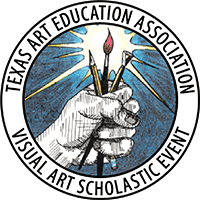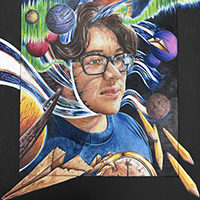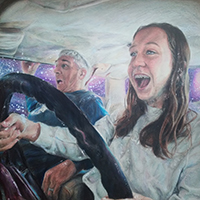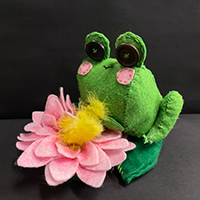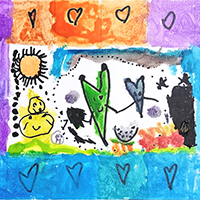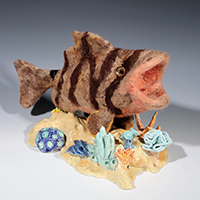About VASE
In 1980, Texas Art Education Association members began to investigate the value of University Interscholastic League (UIL) participation for the visual arts. Since UIL was so prevalent in other academic areas such as drama, debate, band, orchestra, and sports, it was felt that perhaps visual arts could also benefit.
A committee was formed and Jim Henderson was appointed as chairman. For a number of years, the merits of such a program were discussed and debated. It was decided that to really have a true picture of how such a program would work in art, a pilot would have to be conducted. Houston area art supervisors were asked to conduct this pilot.
In the fall of 1990, with input from art educators across the state, music directors who had conducted UIL events, and UIL representatives, policies and procedures were developed. The criterion in this pilot was that it would be good for students, teachers, and art programs in Texas. These objectives were of primary importance and greatly influenced how the UIL pilot was developed for art.
Judges were critical to the success of this program. They were selected for their expertise in one of the ten entry categories as well as their sensitivity to students. They went to a training program with emphasis on making students feel good about themselves and their art while helping them grow and expand their skills. This took place several weeks prior to the district event.
On the day of the event each school was assigned a time and each student assigned eight minutes with a judge. The interview was private with the exception of ESL students who were allowed to bring an interpreter. The judge completed a Juror's Rating Form on each student that was one-third weighted on the student's interview and two-thirds weighted on the work of art. The components on the form were based on the Texas Essential Knowledge and Skills (TEKS) in art for Texas.
After the interview the student rejoined his classmates until all interviews for their school were completed. Students were not competing against each other at this level — as many rating of I (one) were given as were earned. Every student receiving a I (one) received a medal. All students were given copies of their Juror's Rating Form with suggestions and positive feedback included. All artwork remained at the meet site after students and teachers left, along with evaluation sheets and medals. All student pieces that received a I Rating were placed in the correct class, and the top 50 in each class were selected to go to the State VASE Event.
The state event included a week long exhibit at the University of St. Thomas, an awards night with students, parents, and teachers invited, and medals and ribbons for all participants as well as plaques for top state winners. All teachers who participated in the event were asked to complete a survey. This information helped to modify and adjust the second year pilot that was held in February of 1992.
After the second year pilot was successfully completed, the survey results and comments showed a strong desire on the part of the teachers to see this become an official UIL event. The results of these pilots were presented to the Council at Large on Thursday, November 8, 1992, and it was decided to have UIL include visual arts. This would be a three-year pilot under UIL, with TAEA receiving the results at the end of that time.
Unfortunately for TAEA, the timing couldn't have been worse for the UIL State Board, as many new events added to the UIL official docket would not only have to be approved by the UIL board, but also by the State Board of Education. With state funding for schools being in such an ambiguous state, it was felt by those officials that the Visual Arts would have a better chance of being approved, if it waited until the state financial issues with school funding were resolved. The UIL and TAEA had several points in which agreement could not be made. And therefore the VASE event is under the sole direction of TAEA.
- The UIL separates "competition" for high schools according to the size of the school. In example: 2A schools would only enter VASE with 2A schools, 5A with 5A, etc. TAEA believes the art department of all schools can be equally as strong with no regard to size.
- UIL would require Art I Beginning students to enter the event with AP or Advanced students with no regard to ability, level in art, or training. TAEA believes that beginning, middle, and advanced level students should enter the event with students of like art maturation and skills.
The UIL Visual Arts committee then decided on behalf of TAEA that it would establish its own Visual Arts Event for students in the state of Texas. This event would be the outgrowth of the successful pilot that was conducted for two years in the Houston area. So, the name TAEA Visual Art Scholastic Event was chosen to replace the UIL Pilot title, but the basic structure of the competition has remained the same.
In 1994 the Juror's Rating Form was altered to represent a truer authentic assessment rubric and to align with the AP Art rubric. A new rating scale was created and established a IV Rating as being Superior. The State VASE Event was moved to the University of Texas at Arlington.
The 1996 State Event saw the addition of cash scholarships awarded to students. $2000 in scholarships was awarded to art students in each division at the state event.
The "VASE Needs A Face" campaign was established in 1998 encouraging student artists to submit logo designs that would be used to select a logo to represent the VASE program; the first VASE logo was chosen, and it now represents High School VASE, while Junior VASE and TEAM have their own logos. In 2018, VASE was restructured to give all four parts of VASE (TEAM, Junior VASE, High School VASE, and the State VASE Event) equal footing under TAEA, and the current overall VASE Logo was developed to represent the 50,000 2018 student entries from Pre-K-grade 12 across Texas.
State Director Emeriti
Dr. Jim Henderson
Founding Father of VASE
Joey Doyle
Indelible VASE Director
Highlights from 2023-2024 Student Programs
Click any image to see more information about the artwork.
